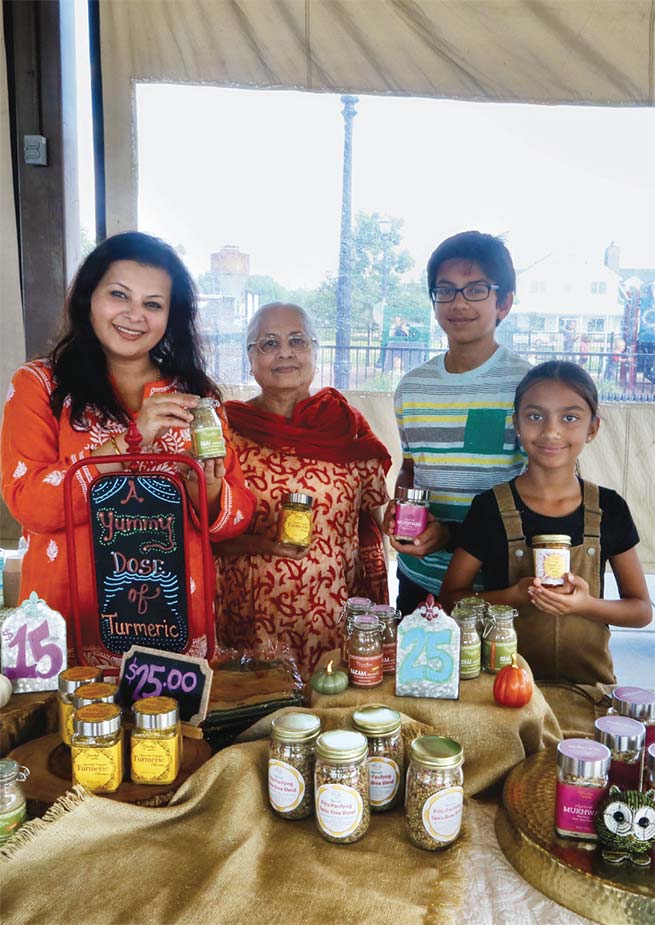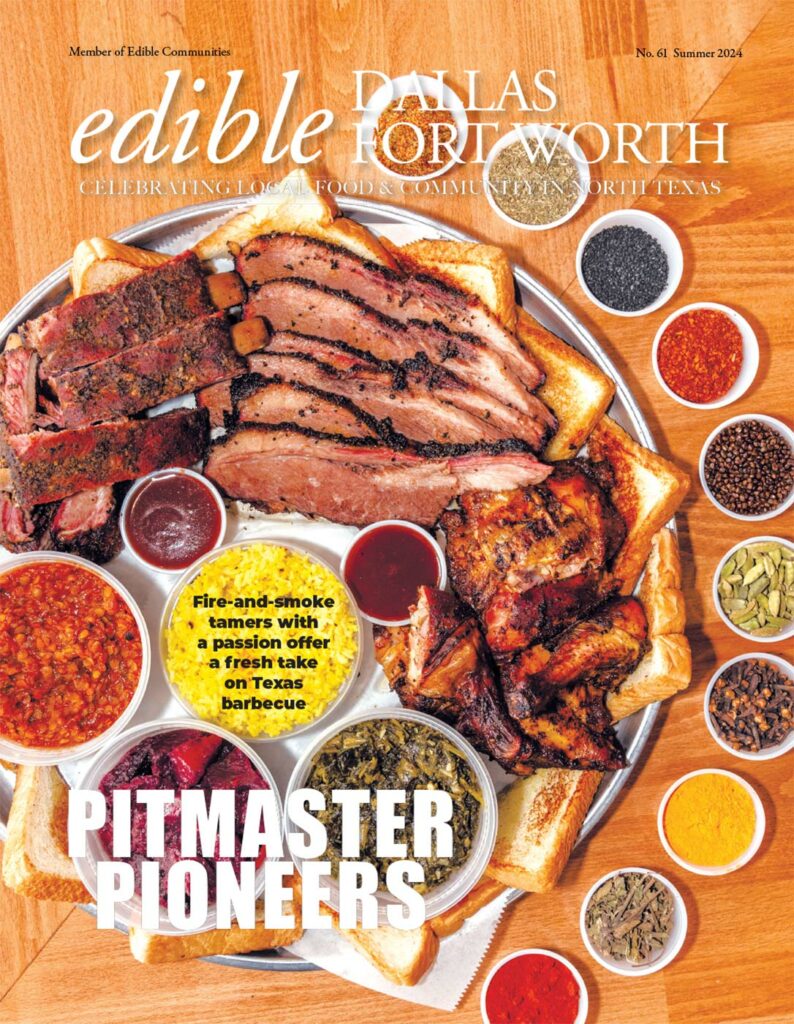
At Coppell Farmers Market, Sapna selling her beSPICED blends with mom Saroj, son Aditya and daughter Mihika. Photo: Terri Taylor
At Coppell Farmers Market, a group of curious shoppers gathers under the demo tent to watch vendor Sapna Punjabi-Gupta prepare spiced chai. The first thing she explains—“chai” means “tea.” No matter what Starbucks’ menu says, no more saying “chai tea.”
India is crazy for two things—the game of cricket and chai. Every Indian home has its own heirloom recipe, passed down through the generations. The spice mix Punjabi-Gupta uses today is her own, an adaptation of her mom Saroj Punjabi’s recipe with ginger, cloves, cardamom, fennel and more. Helping her at the demonstration is her 9-year-old daughter Mihika, while her mother and 13-year-old son Aditya man the table where her colorful line of spice blends are displayed.
Punjabi-Gupta loves to share her Indian roots with the community. After 11 years at Baylor University Hospital as a clinical dietitian, she started beSPICED, a consulting company that teaches culinary wellness through a vegetarian lifestyle. Besides being a registered dietitian, she is also a certified practitioner of Ayurvedic medicine, a 5,000-year-old holistic healing practice. She offers cooking workshops and wellness lectures. You’ll find her at the Coppell Farmers Market every other Saturday selling her blends and products.
India is crazy for two things—
the game of cricket and chai.
Warm spiced tea is a great way to ratchet up the heat and reset your internal thermostat. Punjabi-Gupta says that spices are nature’s medicines, and chai, the perfect vehicle for getting a dose.
You should change out your spice pantry seasonally, she says, just like you change out your clothes closet. Your grocery cart shouldn’t look the same in winter as it did in the summer.
Her chai recipe uses black tea (preferably from India), spices, a splash of warm milk and a little turbinado sugar, after it’s been taken off the flame.
Though her diet doesn’t normally include dairy, she uses milk for her chai, if it comes from a source that treats their animals with respect.
“In India, holy cow isn’t just an exclamation,” she says. “A cow shares her gift of milk with humans, and we must be kind to them in return.”
At Coppell Farmers Market, she found Jersey Girls Milk, a dairy farm in Winnsboro that meets with her approval. After lots of probing questions, she has been reassured of the gentle way that the Courtney family treats their cows. She also likes that they only low-temp pasteurize their rich jersey milk. The traditional cream sits on top, reminding her of the unhomogenized milk she drank when growing up in India.
Breaking for chai is something Punjabi-Gupta and husband Saurabh do on most days around 3 p.m. Not for the purpose of getting a mid-afternoon jolt of caffeine, she says. But rather, a pause to de-stress. A calming, mindful moment.
“I have an Eastern brain and a Western brain,” says Punjabi-Gupta. “And both sides have to be happy.”
RECIPE
SAPNA’S SPICED CHAI
As a kid, TERRI TAYLOR refused to eat her vegetables. Her veggie-phobia was cured in 1977 when she spent eight months working on farms in Norway and France. She studied journalism at UT-Austin and received a master’s degree in liberal arts from SMU. Her short story “Virginia” can be found in Solamente en San Miguel, an anthology celebrating the magical Mexican town of San Miguel de Allende. She has written for Edible DFW since its inaugural issue in 2009. She became the magazine’s editor in 2010 and is the editor of Edible Dallas & Fort Worth: The Cookbook.











